Imagine starting your day with eggs that are cooked just the way you like them—firm yolks that hold their shape perfectly on your plate. Over hard eggs are a breakfast staple, cherished for their fully cooked yolks and incredible versatility.
Table of Contents
What is an Over Hard Egg?
Over hard eggs refer to a style of fried eggs where both the whites and yolks are thoroughly cooked. Unlike other fried egg preparations that leave the yolk runny, over hard eggs have firm yolks, making them a hearty and satisfying choice for breakfast. This method ensures that the eggs are cooked through, providing a dependable texture and flavor that pairs well with a variety of dishes.
Ingredients Needed
To make perfect over hard eggs, you’ll need just a few simple ingredients:
- Fresh Eggs: Preferably organic or free-range for the best flavor.
- Butter or Oil: Butter adds a rich taste, while oil provides a higher smoke point.
- Salt and Pepper: For seasoning to taste.
- Optional Add-ins: Herbs like chives or parsley for garnish.
How to Make Over Hard Eggs
Cooking over hard egg is straightforward. Follow these steps for flawless results:
- Prepare Your Pan:
- Choose a non-stick skillet for easy flipping and cleanup.
- Heat the skillet over medium heat and add a tablespoon of butter or oil.
- Crack the Eggs:
- Gently crack each egg into a small bowl to avoid breaking the yolk.
- Carefully slide the eggs into the heated skillet.
- Cook the Whites:
- Allow the whites to set completely without disturbing the eggs.
- You can gently lift the edges with a spatula to let any uncooked whites flow underneath.
- Flip the Eggs:
- Once the whites are fully cooked and the edges start to lift, carefully flip each egg using a spatula.
- Cook for an additional 1-2 minutes on the second side until the yolk is firm.
- Season and Serve:
- Season with salt and pepper to taste.
- Transfer the eggs to a plate and garnish with fresh herbs if desired.
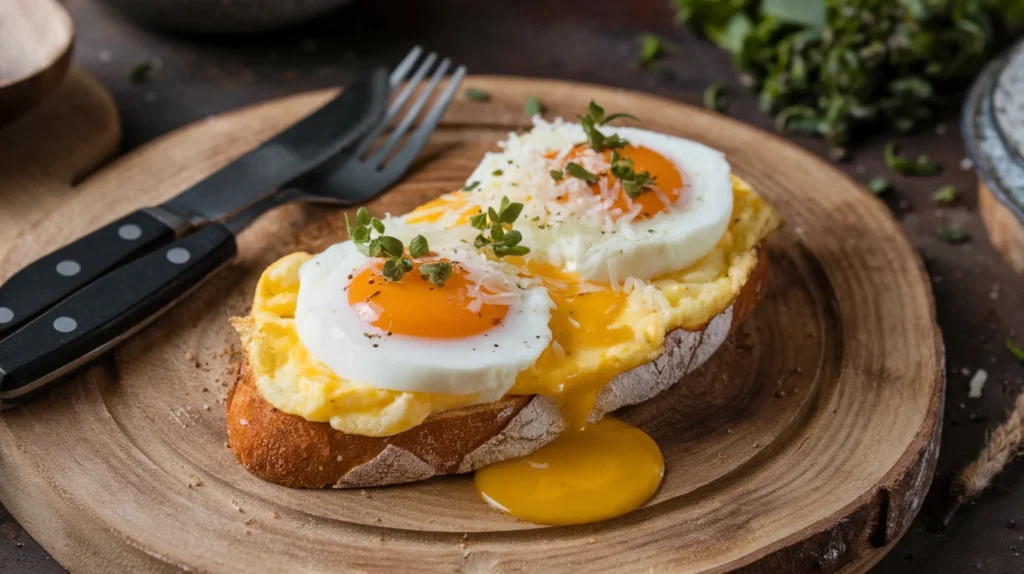
Tips for Perfect Over Hard Egg
- Use Fresh Eggs: Fresher eggs hold their shape better and have a more vibrant yolk.
- Control the Heat: Medium heat ensures the whites cook thoroughly without burning the edges.
- Don’t Overcrowd the Pan: Cook eggs in batches if necessary to maintain even cooking.
- Use a Lid: Covering the pan can help cook the tops of the whites without flipping, but for over hard eggs, flipping ensures both sides are perfectly cooked.
Over Easy vs. Over Hard
Understanding the difference between over easy and over hard eggs is essential for achieving your desired yolk consistency.
| Feature | Over Easy Eggs | Over Hard Eggs |
|---|---|---|
| Yolk Consistency | Runny yolk | Fully cooked, firm yolk |
| Cooking Time | Shorter on the second side | Longer on the second side |
| Texture | Soft and creamy | Firm and solid |
| Best For | Sandwiches, dishes requiring a runny yolk | Breakfast platters, dishes needing a firm yolk |
Choosing between over easy and over hard depends on your personal preference and the dish you’re preparing.
Should You Cook Eggs in Butter or Oil?
Choosing the right fat for cooking eggs can enhance both flavor and texture.
- Butter:
- Flavor: Adds a rich, creamy taste.
- Smoke Point: Lower, so cook on medium heat to prevent burning.
- Best For: Those who prioritize flavor and are cooking at lower temperatures.
- Oil:
- Flavor: Neutral oils like canola or vegetable oil offer a clean taste.
- Smoke Point: Higher, allowing for cooking at higher temperatures without burning.
- Best For: Quick cooking methods and achieving a crispier edge.
Tip: You can also combine butter and oil to get the best of both worlds—flavor from the butter and a higher smoke point from the oil.
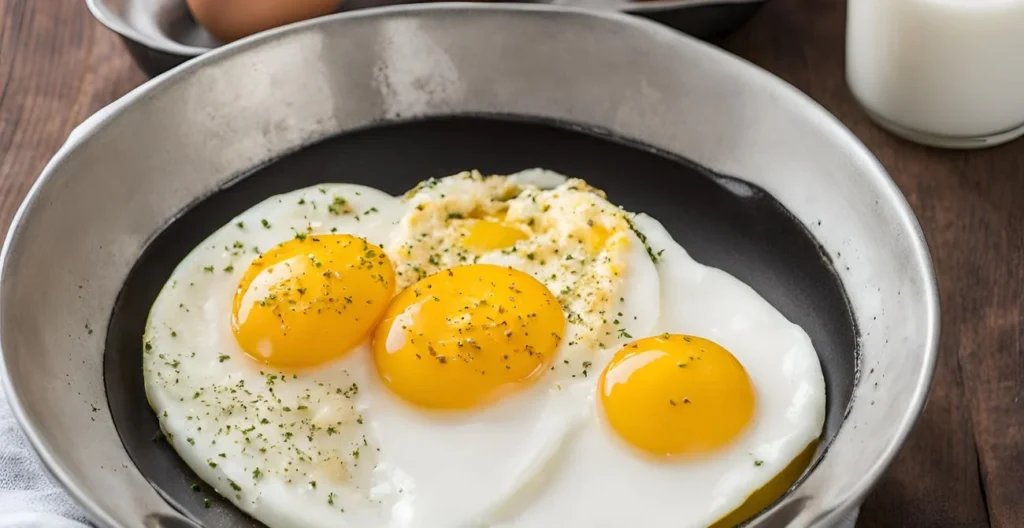
How to Serve eggs over hard
Over hard eggs are versatile and can be served in numerous delicious ways:
1. Classic Breakfast Plate
- Components: Serve alongside bacon or sausage, toast, and hash browns.
- Presentation: Arrange neatly for a hearty and balanced meal.
2. Sandwiches and Wraps
- Components: Layer over hard egg in a breakfast sandwich with cheese and your choice of meat.
- Presentation: Use sturdy bread or a wrap to hold all the fillings together.
3. Egg and Avocado Toast
- Components: Top whole-grain toast with smashed avocado and an over hard egg.
- Presentation: Garnish with red pepper flakes and a drizzle of olive oil for added flavor.
4. Breakfast Burritos
- Components: Combine over hard eggs with sautéed vegetables, cheese, and salsa in a tortilla.
- Presentation: Roll tightly for an easy-to-eat meal on the go.
5. Avocado Boats
- Components: Halve an avocado and fill the center with an over hard egg.
- Presentation: Sprinkle with salt, pepper, and a squeeze of lime juice.
Pairing Suggestions:
- Sides: Grilled tomatoes, sautéed spinach, or fresh fruit.
- Beverages: A hot cup of coffee, fresh juice, or a smoothie.
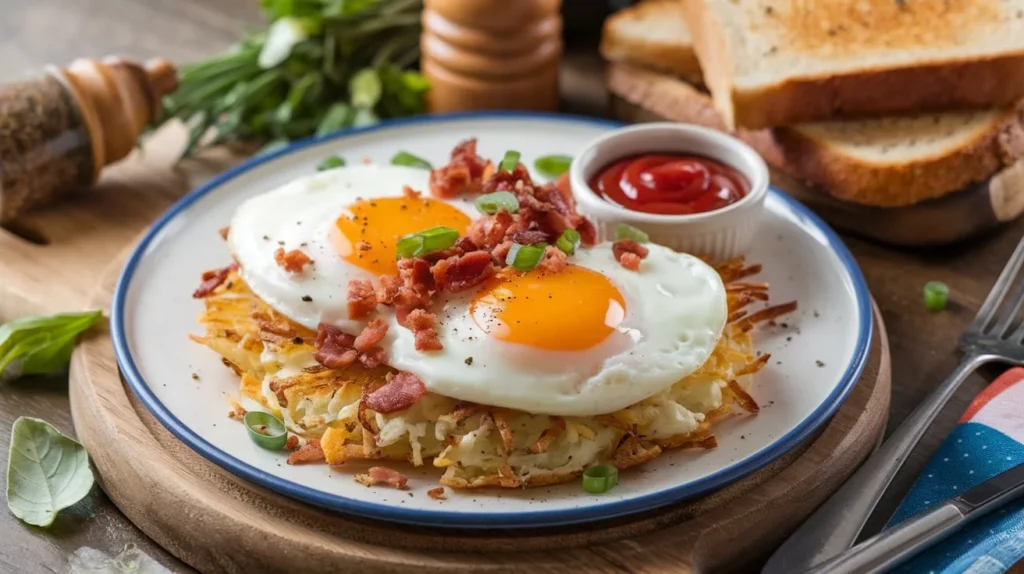
Frequently Asked Questions
What does “over hard eggs” mean?
Over hard eggs refer to fried eggs cooked on both sides until the yolk is fully firm. Unlike other fried egg styles where the yolk remains runny, over hard eggs ensure that both the whites and yolks are thoroughly cooked, providing a solid texture ideal for various breakfast dishes.
What is the difference between sunny side up and over hard eggs?
Sunny side up eggs are fried on one side only, leaving the yolk runny and the whites fully cooked. In contrast, over hard eggs are cooked on both sides until the yolk is completely firm. This difference affects the texture and suitability for different recipes.
What are the 4 types of fried eggs?
The four primary types of fried eggs are:
- Sunny Side Up: Cooked on one side with a runny yolk.
- Over Easy: Flipped once with a runny yolk.
- Over Medium: Flipped with a slightly set yolk.
- Over Hard: Flipped and cooked until the yolk is fully firm.
How to get over hard eggs?
To achieve over hard eggs, start by cooking the eggs sunny side up until the whites are set. Then, carefully flip the eggs and continue cooking until the yolks are completely firm. Use medium heat and cover the pan slightly to ensure even cooking without burning.
Can you make over hard eggs without flipping?
While traditional over hard eggs require flipping, you can achieve a similar result by covering the pan to cook the top of the whites and yolk without flipping. However, flipping ensures both sides are perfectly cooked and the yolk is firm.
What is the best pan for over hard eggs?
A non-stick skillet is ideal for cooking over hard egg as it allows for easy flipping and prevents sticking. A heavy-bottomed pan, such as cast iron or stainless steel with a non-stick coating, ensures even heat distribution for consistent cooking.
Should you use butter or oil for over hard eggs?
Using butter adds a rich flavor, while oil provides a higher smoke point for cooking at higher temperatures. You can also combine both to enjoy the flavor of butter with the heat tolerance of oil.
How do you store leftover over hard eggs?
Store leftover over hard eggs in an airtight container in the refrigerator for up to 3 days. To maintain freshness, wrap the eggs tightly in plastic wrap or aluminum foil before placing them in the container. Reheat gently to avoid overcooking.
Over hard eggs are a versatile and satisfying breakfast option that can be tailored to suit various tastes and meal preferences. By following these expert tips, you can master the technique of cooking over hard eggs, ensuring a perfectly cooked yolk and tender whites every time. Whether enjoyed on a classic breakfast plate, in a hearty sandwich, or as part of a creative avocado boat, over hard eggs are sure to become a staple in your culinary repertoire. Embrace the simplicity and deliciousness of over hard eggs, and elevate your breakfast experience!
Key Takeaways
- Over hard eggs are fried eggs with fully cooked, firm yolks.
- Choose between butter and oil based on desired flavor and cooking temperature.
- Proper flipping and cooking time are essential for achieving the perfect over hard egg.
- Use a non-stick skillet for easy flipping and cleanup.
- Versatile in serving options, from classic plates to creative dishes like avocado boats.
For more detailed guidelines on cooking eggs safely, visit the USDA Food Safety Guide.
More Recipes to Try
- Canned Corned Beef Breakfast Recipes With No Potatoes You’ll Love
- Easy Garlic Parmesan Chicken Pasta Recipe for Busy Weeknights
- baby back ribs with beer and montreal steak seasoning recipe
- Taco Soup Recipe Bold Flavors Made Simple
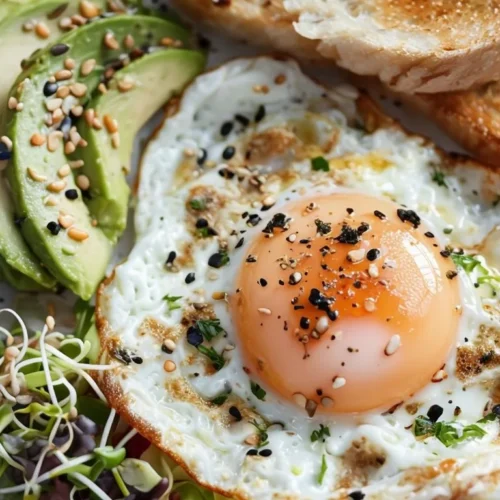
Mastering Over Hard Eggs: The Complete Guide
Ingredients
- 1-2 large egg
- s1 tablespoon oil or butter (for flavor, try butter)
- Salt and pepper (to taste)
Instructions
- Heat the Pan: Add oil or butter to a non-stick pan and heat over medium.Cook the First Side: Crack the egg into the pan, cook for about 2 minutes until the whites are set, creating the perfect base for over hard eggs.Flip the Egg: Gently flip the egg with a spatula, cooking an additional 1-2 minutes until the yolk is firm. This is key to making the perfect egg over hard.Season and Serve: Sprinkle with salt and pepper, then serve immediately. You’ve just made over hard eggs—crispy and fully cooked, just the way you like them!
Notes
- Over Hard vs. Over Easy: Over hard eggs are fully cooked, with a solid yolk, while over easy eggs have a runny yolk.
- Nutritional Benefits: Eggs are rich in protein, vitamin D, and essential minerals.
- Common Use: Over hard eggs work well in breakfast sandwiches, grain bowls, or burgers for added protein.

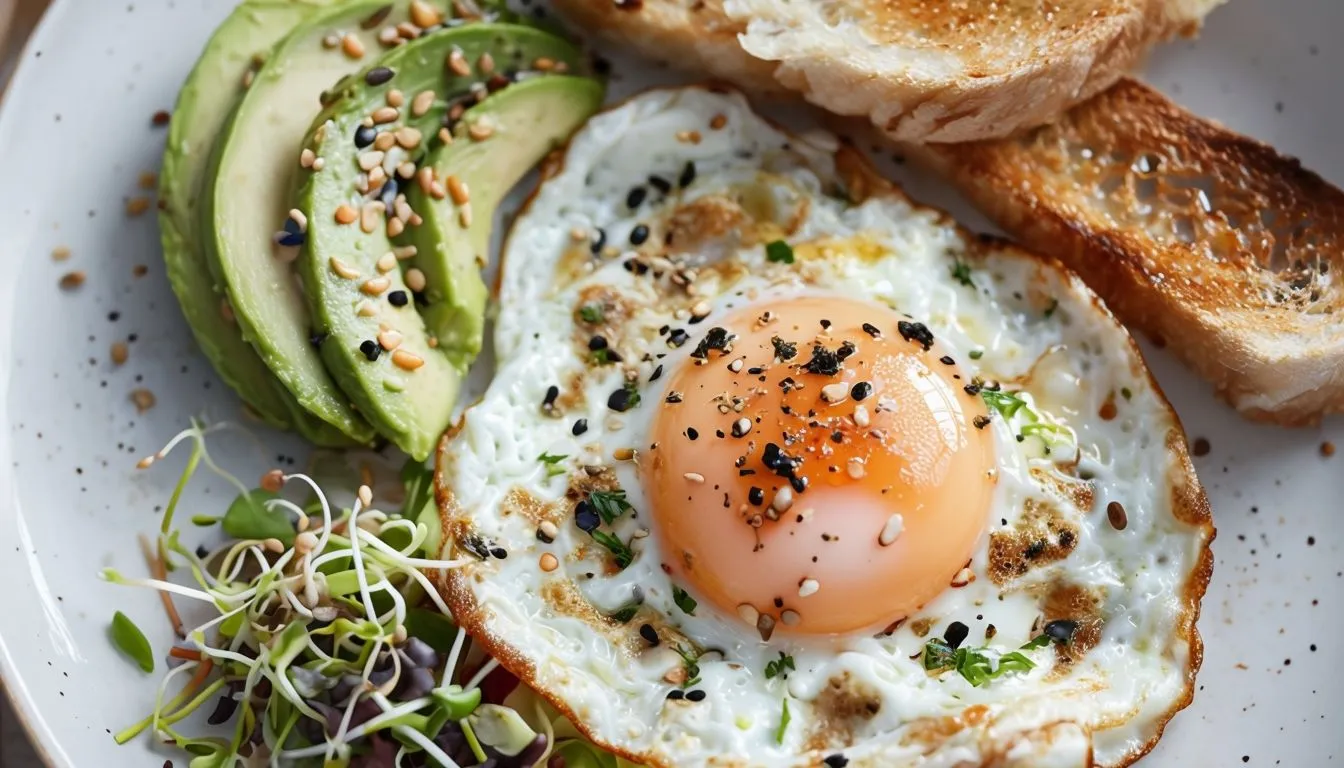
10 thoughts on “Over Hard Eggs”